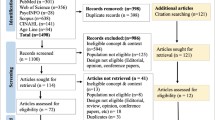Abstract
Background
The authors recently developed a screening tool, the 25-question Geriatric Locomotive Function Scale (GLFS-25), for the early detection of locomotive syndrome (LS). However, the nationwide prevalence of LS based on the GLFS-25 remains unknown.
Methods
A nationwide, cross-sectional Internet survey was conducted to estimate sex- and age-specific mean values of the GLFS-25 and the total number of individuals with LS in Japan. The distribution of the subjects’ sex, age, geographical location, and population size was approximated by that observed in the national population census conducted in 2010. In total, 4,500 subjects who completed the GLFS-25 questionnaire on the Internet were included in the present study.
Results
The age-specific mean values for the GLFS25 were 5.8 in the 40s, 6.0 in the 50s, 5.9 in the 60s, and 8.8 in the 70s. The mean value for the GLFS-25 was significantly higher in the 70s than in the other age groups. The mean value for the GLFS-25 was significantly higher in females than in males. The prevalence of LS was 8.4 % in the 40s and remained stable until the 60s, but increased rapidly in the 70s. The overall mean prevalence of LS was 10.2 %. The total number of individuals between the 40s and 70s with LS in Japan was roughly estimated to be 6.5 million.
Conclusions
This study determined sex- and age-specific estimates for the GLFS-25 using a nationwide, cross-sectional Internet survey. The current results highlight the magnitude of the problem associated with LS and encourage further large-scale population-based epidemiologic studies to determine the accurate prevalence of LS using stratified random sampling.


Similar content being viewed by others
References
Nakamura K. The concept and treatment of locomotive syndrome: its acceptance and spread in Japan. J Orthop Sci. 2011;16:489–91.
Nakamura K. A “super-aged” society and the “locomotive syndrome”. J Orthop Sci. 2008;13:1–2.
Hongo M, Itoi E, Sinaki M, Miyakoshi N, Shimada Y, Maekawa S, Okada K, Mizutani Y. Effect of low-intensity back exercise on quality of life and back extensor strength in patients with osteoporosis: a randomized controlled trial. Osteoporos Int. 2007;18:1389–95.
Sherrington C, Whitney JC, Lord SR, Herbert RD, Cumming RG, Close JC. Effective exercise for the prevention of falls: a systematic review and meta-analysis. J Am Geriatr Soc. 2008;56:2234–43.
Sakamoto K, Endo N, Harada A, Sakada T, Tsushita K, Kita K, Hagino H, Sakai A, Yamamoto N, Okamoto T, Liu M, Kokaze A, Suzuki H. Why not use your own body weight to prevent falls? A randomized, controlled trial of balance therapy to prevent falls and fractures for elderly people who can stand on one leg for </=15 s. J Orthop Sci. 2013;18:110–20.
Seichi A, Hoshino Y, Doi T, Akai M, Tobimatsu Y, Iwaya T. Development of a screening tool for risk of locomotive syndrome in the elderly: the 25-question Geriatric Locomotive Function Scale. J Orthop Sci. 2012;17:163–72.
Muramoto A, Imagama S, Ito Z, Hirano K, Ishiguro N, Hasegawa Y. Physical performance tests are useful for evaluating and monitoring the severity of locomotive syndrome. J Orthop Sci. 2012;17:782–8.
Muramoto A, Imagama S, Ito Z, Hirano K, Tauchi R, Ishiguro N, Hasegawa Y. Threshold values of physical performance tests for locomotive syndrome. J Orthop Sci. 2013;18:618–26.
Bartlett JEKJ, Higgins CC. Organizational research: determining appropriate sample size in survey research. Information technology, Learning, and Performance Journal. 2001;19:43–50.
Fukuhara S, Ware JE Jr, Kosinski M, Wada S, Gandek B. Psychometric and clinical tests of validity of the Japanese SF-36 Health Survey. J Clin Epidemiol. 1998;51:1045–53.
Holmes S. Methodological and ethical considerations in designing an Internet study of quality of life: a discussion paper. Int J Nurs Stud. 2009;46:394–405.
Nakayama T, Sakai M, Slingsby BT. Japan’s ethical guidelines for epidemiologic research: a history of their development. J Epidemiol. 2005;15:107–12.
Fujii T, Matsudaira K, Oka H. The association between compensation and chronic disabling back pain. J Orthop Sci. 2012;17:694–8.
Fujii T, Matsudaira K, Oka H. Factors associated with fear-avoidance beliefs about low back pain. J Orthop Sci. 2013;18:909–15.
Kato S, Takeshita K, Matsudaira K, Tonosu J, Hara N, Chikuda H. Normative score and cut-off value of the Neck Disability Index. J Orthop Sci. 2012;17:687–93.
Matsudaira K, Kikuchi N, Murakami A, Isomura T. Psychometric properties of the Japanese version of the Fear-Avoidance Beliefs Questionnaire (FABQ). J Orthop Sci. 2014;19:26–32.
Kraut R, Olson J, Banaji M, Bruckman A, Cohen J, Couper M. Psychological research online: report of Board of Scientific Affairs’ Advisory Group on the Conduct of Research on the Internet. Am Psychol. 2004;59:105–17.
Acknowledgments
The authors would like to thank Shunichi Fukuhara and Kumi Takamizawa for their advice.
Conflict of interest
This work was financially supported by a JOA Research Grant and a Japanese Society for Musculoskeletal Medicine Research Grant. All authors declare that they have no competing interests; each author certifies that no commercial relationships exist (e.g., consultancies, stock ownership, equity interests, patent/licensing arrangements, etc.) that might pose a conflict of interest in connection with this article.
Author information
Authors and Affiliations
Corresponding author
About this article
Cite this article
Kimura, A., Seichi, A., Konno, S. et al. Prevalence of locomotive syndrome in Japan: a nationwide, cross-sectional Internet survey. J Orthop Sci 19, 792–797 (2014). https://doi.org/10.1007/s00776-014-0606-3
Received:
Accepted:
Published:
Issue Date:
DOI: https://doi.org/10.1007/s00776-014-0606-3




